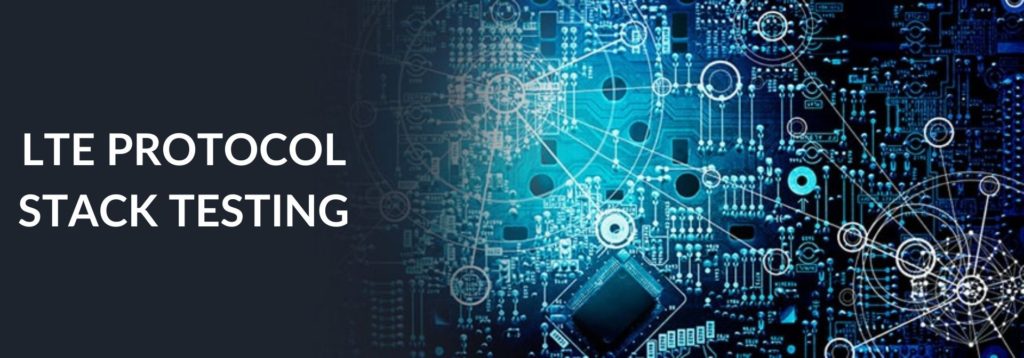
Tool Demo Session
Introduction of the tools Demo session
Introduction of Protocol Testing
Introduction of LTE Protocol testing company works culture.
Introduction of all tools
- How exactly testing do & Types of testing?
- Practical use cases of Different tools.
- QXDM, QCAT, Wireshark & ADB, ELT, ARM logger tool intro.
- How we can help the developer to debug Issues.
SECTION-1: Introduction about wireless technologies
- GSMArchitecture
- UMTSArchitecture
- Frame architectures of GSM &UMTS
- Protocol stack architecture of UMTS
- UMTS Channels
- Revolution from 2G to 4G
SECTION-2: Modulation & Multiple Access Schemes
- Different Modulation schemes: BPSK, QPSK, QAM, 16-QAM, 64-QAM & 256 QAM
- Different Multiple Access Schemes: TDMA, FDMA, WCDMA, OFDMA & SCFDMA ¬FDD & TDD
SECTION-3: Introduction to LTE
- Comparison of LTE with different Technologies
- LTE High-level architecture with different interfaces
- LTE interfaces with corresponding protocols
- LTE Protocol Stack Architecture (control plane/user plane)
- LTE Channels
- Understanding of Data and Signaling Communication
- LTE Frame Architecture
- LTE BearerManagement
- Signaling RadioBearers
- Geographical Areas
- Network Identities
- LTE ResourceGrid
- OFDMA
- SC-FDMA
- RSRP, RSRQ, SINR, CQI, RIQOS
- Cell Acquisition Procedure
SECTION-4: RRC (Radio Resource Control)
- UE –RRC States
- RRC connection Establishment
- System Information Acquisition
- Initial Security Activation ¬RRC Connection Reconfiguration
- RRC Connection Reestablishment
- RRC Connection Release
- Handovers (X2, S1 )
- Radio resource configuration
X2 interface
S1 interface
SECTION-5: NAS (Non-Access Stratum)
- EMM States ¬ECM/ESM States
- LTE Registration/Attach Procedure ¬Tracking Area Update Procedure
- Service Request Procedure
- S1 Release Procedure
- Detach Procedure
- NAS Security Activation
SECTION-6: PDCP (Packet Data Convergence Protocol)
- PDCP Architecture
- PDCP Procedures
- Header Compression & Decompression States
- PDCP Security Functions ¬PDCP PDU Formats
SECTION-7: RLC (Radio Link Control)
- RLC Architecture
- RLC Entities
- RLC Modes
- Transmission & Reception of Data
- ARQ Procedures
- RLC PDU Formats
SECTION-8: MAC (Medium Access Control)
- MAC Architecture
- Random Access Procedure
- HARQ operation
- Logical Channel Prioritization
- Scheduling request
- Buffer Status Reporting
- Power Headroom Reporting
- Discontinuous Reception
- Semi-persistent Scheduling
- MAC Scheduler
- MAC PDU Formats
SECTION-9: CS Procedures
- CSFB
- IMS
- SIP
- VOIP
- RTP & RTCP
- Carrier Aggregation
5G:
What is 5G and why? What is new?
The ITU IMT-2020 5G requirements
ITU 5G Use Cases – eMBB, URLLC and mMTC Expectations, use cases and requirements
Explain the NR release 15
Explain the NR release 16
Explain the NR release 17
What is Standalone (SA) v Non-Standalone (NSA) Networks?
Deployment option
Describe the EN-DC Architecture
Describe the SA Architecture
User Plane protocols (NG, Xn, F1-interface)
Description, AMF, SMF, PCF, AUSF, UDM, UPF, NEF, NRF, AF.
Frequency bands FR1 and FR2?
New Radio (NR) features, NR Numerologies
NR radio frame and subframe structure
Slots and slot formats
Self-contained slots and flexible numerology
Physical Channels and Signals
Resource Grid, Resource Element, Resource Block
Radio layer 2 protocols- SDAP
Radio layer 2 protocols- PDCP
Radio layer 2 protocols- RLC
Radio layer 2 protocols- MAC
Radio Resource Control protocol (RRC)
5G RRC States and 4G RRC states
Massive MIMO
Beamforming
DC concepts (MeNB, SeNB, MCG etc)
DC control plane and user plane options
CA concepts (PCell, SCell, scheduling etc)
CA control channel usage (up to 32 carriers)
Bandwidth part
CORSET configuration (PDCCH)
Synchronization Signal Block Location:
Protocol testing Course content (Practical)
1. Introduction of all tools.
- How exactly testing do & Types of testing?
- Practical use cases of Different tools.
- QXDM, QCAT, Wireshark & ADB, ELT, ARM logger tool intro.
- How we can help the developer to debug Issues.
2. Logs capturing process.
- QXDM, QCAT & Wireshark Tools installation.
- QCN Backup, NV value important.
- Qflash tool, how we do device Flashing Qualcomm & Mediatek Chipset.
3. Call Flow With QXDM.
- DMC creation in QXDM.
- Call Flow (QCI9, 5 &1).
4. Jobs opportunity in protocol testing.
- Job roles in an organization
- Test case plan of different teams.
- Issue discussion, How testing team report issue, new test case writing.
5. Resume making tips.
- Resume writing skills, Material sharing & important website for study.
************* Study material & tolls will be provided ************
- QCAT, QPST & Qfil.
- Wireshark.
- Logs for analysis.
- Study materials & Notes.
